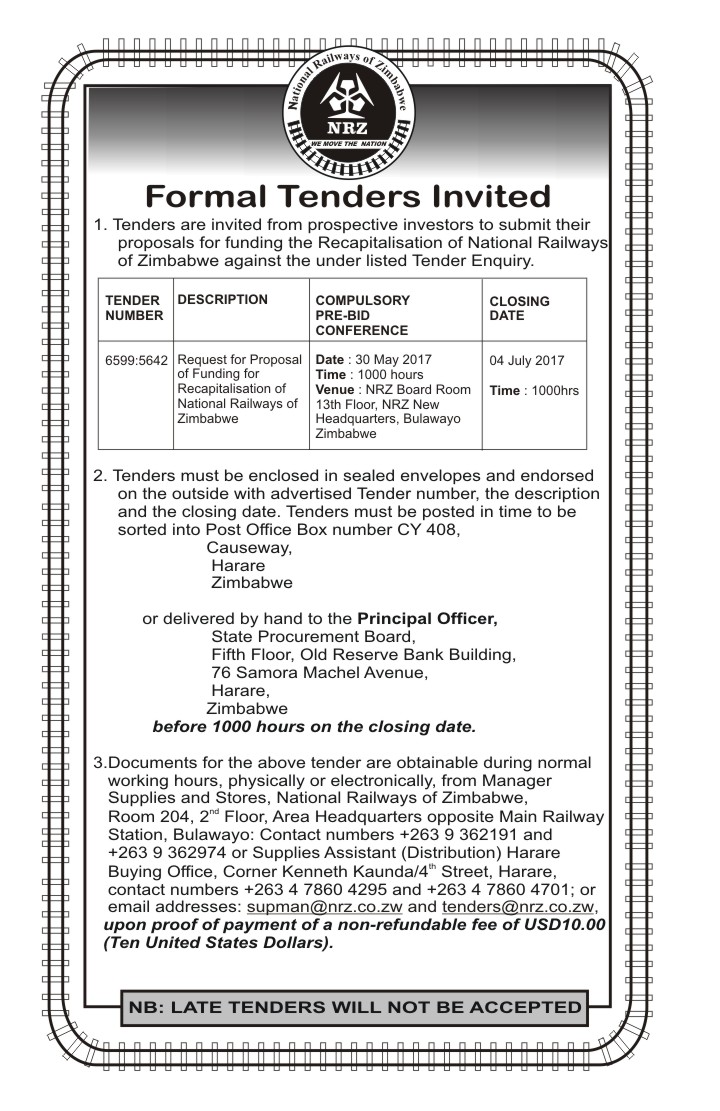LOCAL RAIL NETWORK, SYSTEM FAVOURABLE FOR LEASED EQUIPMENT
The National Railways of Zimbabwe (NRZ) would like to set the record straight on the operational status of the Interim Solution Equipment it is leasing from Transnet under the Diaspora Infrastructure Development Group (DIDG) /Transnet Consortium Recapitalisation project.
All the equipment NRZ received is compatible to the rail system and conditions in the country.
When the DIDG/Transnet Consortium offered to avail locomotives and wagons to NRZ as an interim solution to its perennial problem of resource shortages, the NRZ requested for 10 mainline locomotives, 3 shunt locomotives, 200 wagons and 34 passenger coaches.
At the time the equipment was received at a function officiated by His Excellency, the President, Cde Emmerson Mnangagwa, Transnet had sent 3 class 34 locomotives, 4 class 43 locomotives, 151 wagons and 7 passenger coaches/vans.
The NRZ has now received six class 34 locomotives, four class 43 locomotives and 200 wagons. Three class 34 locomotives are still to be delivered.
The class 34 locomotives, initially earmarked for shunt operations, are the same size as NRZ’s mainline locomotives and are not suitable for use as shunt locomotives. They have been deployed for Mainline operations.
The class 34 locomotives, wagons and coaches were deployed for NRZ operations on March 29, 2018 after reaching agreement on the commercial terms with Transnet and clearing the equipment with ZIMRA
The four larger class 43 locomotives’ deployment has been delayed to cater for NRZ employees’ training to familiarise them with the computerised locomotives, among other reasons.
Transnet is also working on arranging special insurance cover for the locomotives and this is still to be finalised. It is expected that the issue of insurance will be concluded by 8 June 2018.
While the class 43 locomotives are stabled (not in use), NRZ is not paying hire charges. Hire charges will only start accruing after Transnet has released the locomotives to NRZ.
Once the insurance cover has been finalised, the class 43 locomotives, which are heavier than the NRZ locomotives, will be deployed on the Dabuka-Harare section which has 54kg/m rail as opposed to the other mainline corridors which have 45kg/m rail.
The Dabuka-Harare section has a higher traffic density due to cargo from Beitbridge, Maputo, Bulawayo and Thomson Junction all converging at Dabuka. This is the reason why the section was electrified first and has 54kg/m rail.
However, the class 43 locomotives can still be deployed on corridors with 45 kg/m rail but on reduced speeds.
Locomotives of the same weight as the class 43’s are being run on 45 kg/m rail elsewhere in the region without a problem.
This is not the first time NRZ has hired equipment from foreign rail operators. The organization was already leasing some 50 wagons from Transnet at the time the interim solution equipment arrived and some locomotives from Grindrod in 2017.


